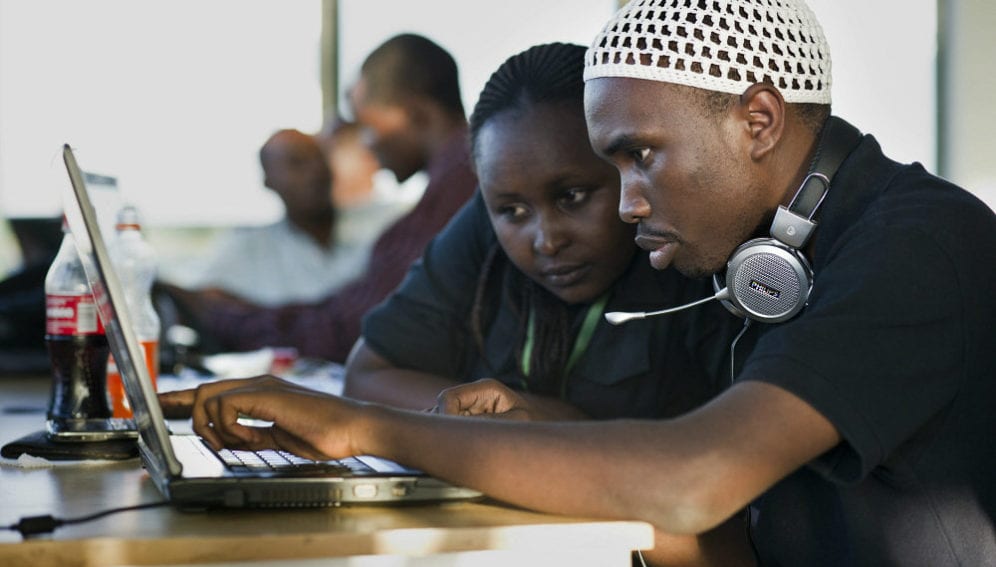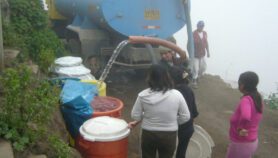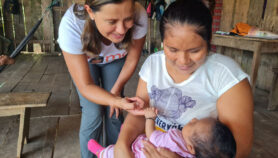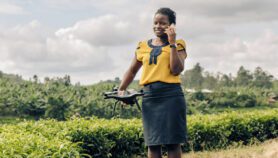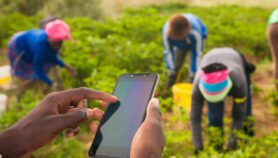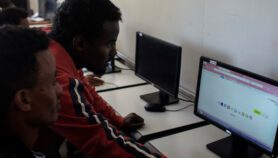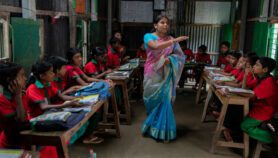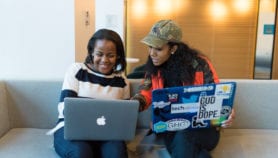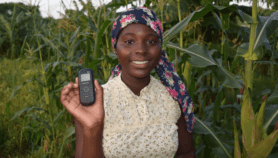By: George Achia
Send to a friend
The details you provide on this page will not be used to send unsolicited email, and will not be sold to a 3rd party. See privacy policy.
In just three years, a Nairobi tech hub has expanded to drive innovation in farming, finance and crisis reporting.
[NAIROBI] On the fourth floor of the Bishop Magua Centre on Nairobi’s Ngong Road, young men and women busily work on their laptops.
The group includes entrepreneurs, web and mobile phone programmers, designers and researchers — part of a vibrant technology community that meets regularly to share ideas and work together on common interests.
This is Nairobi’s innovation Hub (iHub), which opened its doors in March 2010. The initiative drew inspiration from an earlier project, launched in the aftermath of post-election violence in Kenya in 2008, when Nairobi-based IT specialists Juliana Rotich and Erik Hersman developed a website to map reports of violence, naming it Ushahidi — Swahili for ‘testimony’.
“The original website was used to map incidents of violence and peace efforts throughout the country, based on reports submitted via the web and mobile phones,” says Jimmy Gitonga, iHub’s manager.
Ushahidi now has more than 45,000 users in Kenya, and its popularity has led to the development of a platform that can be used in different global contexts. It has since been used to monitor crises across the world, including the earthquake in Haiti in 2010, the Japanese tsunami in 2011 and violent incidents during Egypt’s 2011 revolution. “It has become a new way of mapping a crisis and documenting what is happening,” says Gitonga.
He explains that, inspired by Ushahidi’s success, Hersman thought: “What if we open a space that would allow different technology people to come together and do something that would affect the world as Ushahidi did?”
And from the kernel of this idea, and with funding from the philanthropic investment firm Omidyar Network and the international development organization Hivos, the iHub was born.
Shared space for innovative ideas
The iHub works through open innovation. The space enables members to build the skills required to turn ideas into actions, via an in-house business unit that helps them develop a vision, business plan and team.
A key feature of the iHub community is the knowledge-sharing culture developed through collaboration, skill sharing and mentorship.
“Ten viable start-ups have come from here, and some members have been funded to set up companies that are about to become global.”
Jimmy Gitonga, iHub
Membership is open and free to those who work in information technology programming, design or research. It has three levels: ‘white’ for members who use the service virtually; ‘green’ for those working on specific collaborative projects, who can use the iHub for face-to-face meetings and networking; and ‘red’, for those who have completed six months of green membership, and have used this time to produce a viable product or service.
Red membership requires a monthly payment of 15,000 Kenyan shillings (around US$170), and includes a desk, locker and priority meeting room use.
Nurturing entrepreneurs
Three years down the line, Gitonga says, the iHub has been a huge success. “Ten viable start-ups have come from here, and some members have been funded to set up companies that are about to become global,” he says.
One of these is M-Farm, launched by three young Kenyan women: Jamila Abass, Linda Kwamboka and Susan Oguya.
“M-Farm is a mobile phone service that delivers real-time information to farmers on current market prices, weather alerts and local agro-suppliers,” explains Kwamboka, M-Farm’s marketing officer.
“It also brings farmers together to buy or sell their products in groups, helping them to gain access to larger markets,” Kwamboka says. It carries out cost-benefit analyses based on farmers’ specific business profile and market prices in different countries before deciding where to sell the product, Kwamboka adds.
An interactive voice-response mechanism — operating in both English and Swahili — answers farmers’ queries.
Another innovation — now a fully-fledged business — is Kopo Kopo a platform that small and medium-sized enterprises (SMEs) can use to manage payments via mobile phones and to build customer relationships. Kopo Kopo has partnered with Safaricom, a leading Kenyan mobile network operator, to allow users of Safaricom’s M-PESA money transfer service to buy goods from SMEs throughout Kenya.
And the mobile phone application iCow helps small holder farmers by providing them with innovative tools to reduce risks in their day-to-day activities and milk production.
Dairy and poultry farmers have access to knowledge as well as experts and customised calendars for their livestock on the mobile phone platform.
iCow prides itself in building ecosystems for farmers and brings intentionality to their work, resulting in improved yields and incomes. Farmers pay Kenyan shillings for each SMS received from the iCow agricultural platform and on average pay half a dollar a month for each subscription.
Opportunities and challenges
Gitonga says the iHub has been so successful that people from other African countries have come forward to enquire how they can replicate it. Rotich, Ushahidi’s co-founder, notes that iHub projects outside Kenya are at different levels of development, and that some countries do not have an iHub at all because of the weakness of their information and communications technology (ICT) sectors. Different plans are in place to help them obtain funding and provide free ICT courses to communities.
For example, she says Zambia has little in the way of an ICT sector. Rotich adds that iHub will help Zambia seek funding to offer ICT courses at a subsidised cost and, later on, for free.
Back home in Kenya, space has been a key challenge. “When we opened, we thought the space was much larger than we needed,” says Gitonga. “But within three months, it was too small for us and we could not allow more than 50 people to use it concurrently. So we came up with our membership system to ensure that those who really need the space are hosted here.”
Other challenges are financial viability and sustainability. “We started with an initial grant from Omidyar and Hivos, but we needed to make this initiative sustainable,” explains Gitonga. “So we set up initiatives that offer services to the tech community, with any profit being ploughed back to the iHub.”
These include M-Lab, launched in 2011 — a collaboration between the iHub, the University of Nairobi and the World Bank that offers mobile phone-based training on developing applications, for a fee.
“Many people who want to be developers come in, but we train them beyond software development to start viable businesses,” says Gitonga. So far, 150 people have been trained at the M-Lab and, out of those, about 20 have gone on to set up their own businesses.
Overall, the iHub’s success hinges on collaborative efforts between individuals in the technology sector who come together to share innovation for the benefit of many. Whatever the sector — from farming to health — if context and need are well-defined, such initiatives can easily be replicated across the entire African continent.
This article is part of a series Africa’s Minds: Build a Better Future produced by SciDev.Net in association with UNESCO, with funding support from the Islamic Development Bank.


